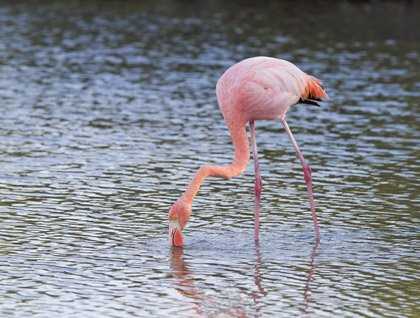We are still exploring Santa Cruz Island. Right now, we are on the north side. Here the sun shines and it is very dry. Most islands that are higher than 1,000 feet above sea level happen to be cool, misty and green on the southern side while the northern side is always dry and sunny. Here living conditions are difficult for most organisms, however. There are some species that endure hardship and manage to stay alive until the annual rains come.
This morning we explored Dragon Hill, walking through the dry forest among cacti and Palo Santo (“holy stick”) trees. These trees are the dominant type of vegetation on the lowlands. The holy stick trees make the landscape white while the cacti give green splashes to the scene. It is here that the Galápagos land iguanas live. As we explored the dry forest we found some beautiful large yellow iguanas.
Galápagos land iguanas are inhabitants of the scrubland and they feed specifically on prickly pear cactus during the dry season. We found several burrows throughout the forest, most of them guarded by a large yellow male iguana. All these burrows will become nesting sites for females later on.
This visit includes a walk along the shore too. Here we spotted a lot of migrant birds that fly in from the Canadian tundra. Some were foraging on the rocky shore and others at the pond. This small pond can have interesting birds such as ducks, sand pipers, and flamingos.
Later on, we took the Zodiacs and headed to the coral sand beach and some of us headed to the deepwater snorkeling site. The water was clear and there was plenty of fish of different sizes and colors. There was also a group of playful sea lions and we even saw a Galápagos penguin. This special bird was a unique sight at the snorkeling site because it was the very first time I spotted a penguin here!
It was an amazing day!







